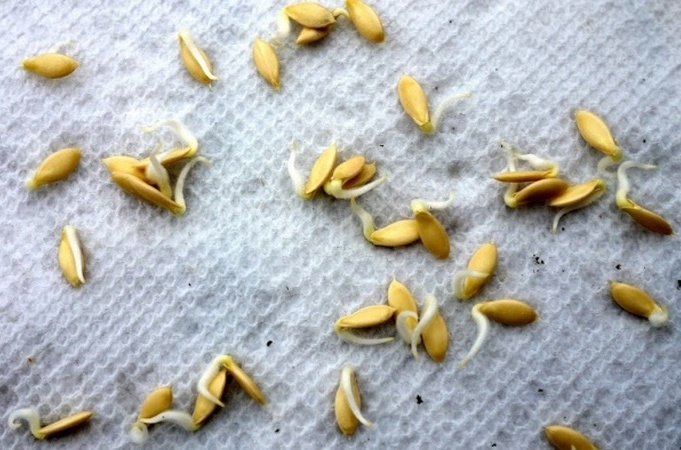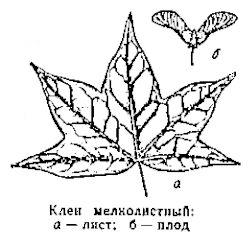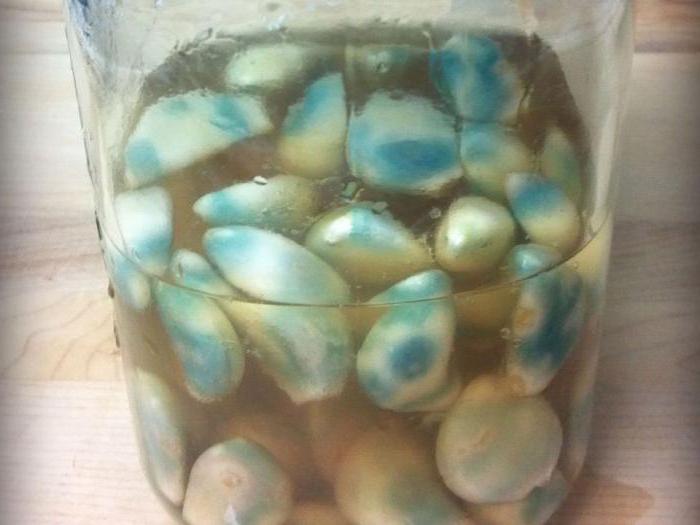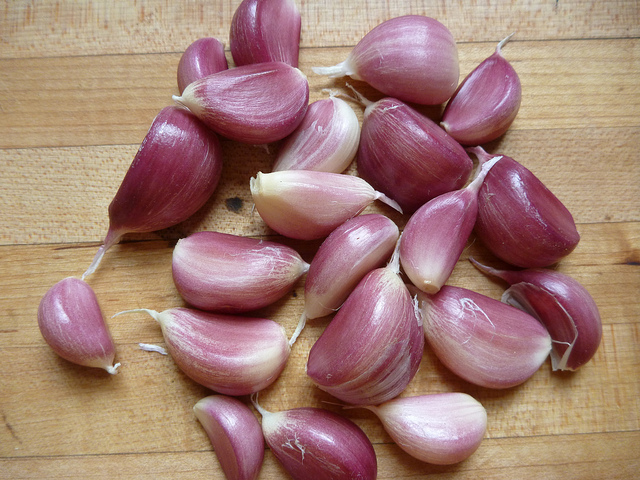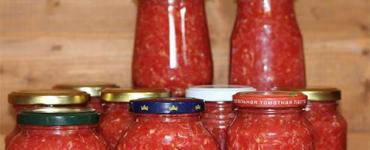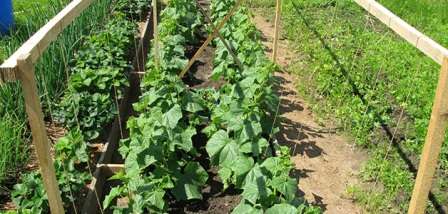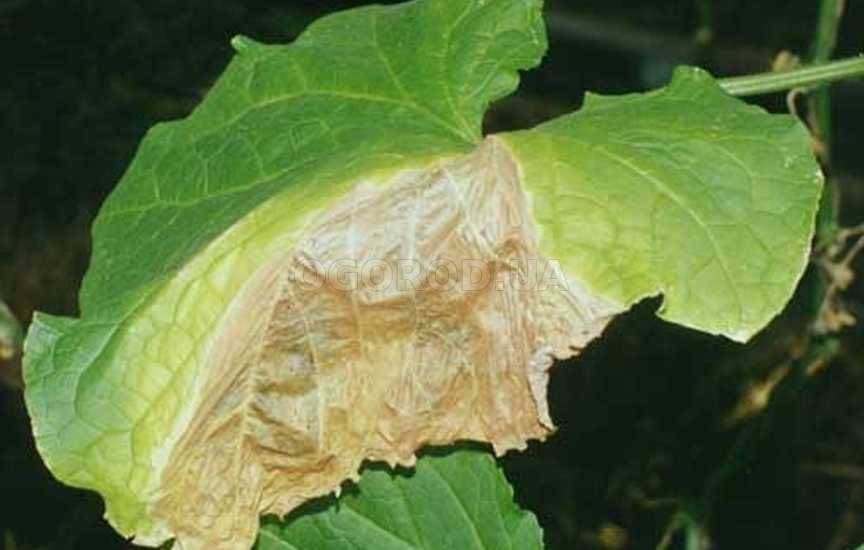Raspberry moldy what to do. How to protect berries from mold. Fungal diseases
I love summer not only for warmth, but also for berries. Strawberries, raspberries, cherries, currants, blueberries, blueberries ... ....
Here you bring home a full basket of berries, and the next day, or worse in the evening, most of them are covered with mold.
Now there is a solution to this problem. Harold McGee suggests applying thermotherapy to berries. Namely, dip them in very hot water.
Here's what Magky says:
The berries are moldy, because mold spores, which are everywhere, easily develop on the moist surface of the moisture-generating berries, and easily penetrate the smallest lesions in their thin skin.
Despite the fact that Harold tried to dry the berries, put them so that they touch each other as little as possible, store them in the refrigerator, mold still appeared very quickly. We are familiar with this.
Therefore, when he saw information in one of the magazines on agriculture that life can be prolonged with berries by means of heat, he immediately went on to study the issue.
Harold collected about 12 reports that hot water stops mold growth on berries, grapes and pitted fruits. Temperatures in the tests ranged from 113 to 145 degrees Fahrenheit (45-63 degrees Celsius), and the aging time of berries in such hot water varied from several minutes at a low temperature to 12 seconds at the highest.
It is hard to believe that berries can withstand temperatures of 66 degrees. A human finger in such water will receive a third degree burn in less than 5 seconds!
Harold bought kilograms of different berries, divided each type of berries into 2 parts. He dipped one part in hot water right in a plastic box. Then he drained the water, dried the berries on a paper towel, and let them cool and dry. Then he packed them again, so that they sweated properly, and left them at room temperature. After 24 hours, he counted the blueberries in each basket.
He heated strawberries for 30 seconds at 52 degrees. Of the 30 berries, only one was moldy. At the same time, among 30 unprocessed berries, 14. moldy. In addition, Harold subjected the rumpled berries to heat, with mold on the tips. The mold not only did not spread, it disappeared!
Then McGee tried to apply thermotherapy to raspberries and blueberries (52 degrees for 30 seconds) and got the same good results.
Blueberries also showed excellent results.
It is interesting that the same result can be obtained using hot air, but at home it is easier to use hot water.
Of course, I believe Mr. Magky's word. But for my beloved Prakuking and for more evidence (and indeed it’s interesting!) I bought a kilogram of strawberries, and conducted my own experiment.
I divided the strawberries into two parts. Poured water in a bowl with a temperature of 66 degrees. Put the berries in water for 30 seconds. Gently drained the water, put the berries on a paper towel. Let them dry. I was amazed that their texture has not changed in any way, they have not welded somewhat. Returned to the bowl. Left on the kitchen table. By evening, the processed berries were like new, and the unprocessed ones lost their bright color, and slightly fermented, a sour smell appeared.
In reality, the difference was much more noticeable than in the photo. I could not take pictures so that the difference was very obvious.
For the night I put both bowls in the refrigerator. I didn’t find any changes in the morning. Again I left bowls with strawberries on the table.
Returning home at one in the morning, I found that the strawberries in the unprocessed bowl were finally sour, but the processed strawberries spoiled only slightly, and then only some berries. Although, I did not find mold either there or there. But the thermal effect clearly slowed the spoilage of berries!
Photo will not be, I'm sorry, I forgot. You will have to believe the word not only McGee, but also to me :)
In any case, I think this information will be very useful to you, and over the summer you will save many, many berries from imminent death!
Sourse of information.
There is a strong opinion that raspberries do not need to be washed. Moreover, during this process it can fall apart. However, eating dirty berries often leads to intestinal infections. Therefore, many housewives have an acute question: should raspberries be washed and how to do it correctly so that it remains intact and clean.
Do I need to wash the collected raspberries
Many people refuse to wash for the following reasons:
- she will turn into porridge;
- has bactericidal properties, and there is no point in wasting time washing;
- all vitamins are washed out of raspberries, and its benefits are nullified.
However, the wind brings dust and earth, exhaust fumes (if the bush grows near the road) to the berry. If the product was bought on the market, it is not known which hands collected it. Therefore, it is still worth washing the berries, especially when they are going to use fresh raspberries. Raw food from the street is dangerous.
Thus, the question is whether to wash the collected raspberries before use, the answer is yes. But this should be done immediately before meals. Soaked berries become moldy very quickly, even if put in the refrigerator.
But is it necessary to wash when jam, jam or stewed fruit is to be cooked, canning, grinding, freezing? Once the berries are heat-treated or cooked with a substance such as sugar, people refuse to wash, the more it is important for them to maintain the integrity of all raspberries.
To the question whether it is necessary to wash the collected raspberries for jam, biologists and infectious disease doctors answer: "Not at all necessary." If the berry was picked from a bush, and not from the ground, and it is known that it is not sprayed with anything chemical, then you can do without washing. Cooking includes obligatory boiling, the same procedure takes place when cooking compote and jam, and with prolonged and strong heating, most bacteria die.
Is it necessary to wash ripe raspberries before freezing? Again, not worth it: if the berries run out of juice, then their freezing will be impossible. You also do not need to sort raspberries, because it is easy to damage it with this manipulation. Jars for storing frozen berries are sterilized or simply boiled over with boiling water. This is enough to disinfect. Next, raspberries should be grated with sugar and put in banks. You can freeze the mixture not in the freezer, but simply in the refrigerator.
How to wash it properly
A healthy diet involves not only eating healthy plant foods, but also taking good care of them. Before eating, you need to wash vegetables, fruits and berries. Only a pure product is safe, and poisoning is excluded.
How to wash raspberries:
- put everything collected in a colander, without going over, so as not to crush; tear off the leaves and stalks: they either fall away during the washing process, or they can be removed with food;
- pour cold water into a deep dish, lower the colander there and hold for a minute, you can shake slightly, but not much;
- repeat this dipping several times;
- you can wash the berries under a cold shower, but under a weak or medium stream; but the effect of such washing will be worse than dipping;
- if there is a suspicion that there are worms or beetle larvae in raspberries, you need to hold a colander with berries in salt water (put 10 g of salt per liter), then rinse thoroughly in ordinary;
- for better destruction of microbes, contrast washing is recommended: keep the colander in cold or intensely warm water (in no case in boiling water) - 2-3 times in each container;
- after washing, leave the berries in a colander, let the water drain completely (this takes 10-15 minutes).
The saline solution can be replaced with a mild soap, but should be washed after it even more thoroughly.

Washed raspberries must be eaten completely.
Each person chooses the method of eating raspberries he needs. Someone prefers just to eat it, others like to cook different types of jam from it, others try to leave more for the winter. But all lovers to enjoy a raspberry dessert should observe the necessary level of hygiene: do not wash it is permissible only when the berry is frozen or subjected to heat treatment. If you decide to eat the product fresh, you need to rinse it in water, otherwise it may cost health.
Gray rot or botritis is a widespread dangerous fungal disease of raspberries. At the beginning of its development, berries are affected: on them separate softened brown spots form. The spots grow rapidly and cause complete decay of the berries, which are covered with a thick gray velvety coating. Berries become unsuitable for use in food. Brown spots appear on the stalks, quickly covering them with a ring, which inevitably causes the drying of still green ovaries.
On the leaves, gray rot forms massive, blurry, dark gray rotting spots. After this, with a strong development of the disease on young shoots in the internodes, elongated spots appear, and during the winter the infected shoots die.
Gray rot develops not only on living plant tissues, but also on various dead rotting plant debris, in the soil and on its surface. As a rule, outbreaks of the disease occur in years with wet and cold weather, and raspberries in thickened areas are more affected: spores of gray rot germinate under favorable conditions and invade living tissues literally within a few days and cause massive damage and death of berries.
Often I had to see how gardeners process affected raspberries with anything that comes to hand: "just in case." However, there are no universal remedies, even of chemical origin, and too intensive application of chemical preparations, on the contrary, inhibits planting and stimulates even more rot development.
Therefore, the correct approach to the treatment of raspberries should combine agronomic techniques and treatment with the necessary drugs.
In one place, raspberries can grow up to 15¬20 years, durability and productivity depend on the characteristics of the variety and care, but the maximum productive period is no more than 10-12 years. By this time, the rhizome is aging, the shoots are getting smaller, the yield is falling - and raspberries are quite easily affected by various fungal diseases. Such bushes must certainly be completely uprooted and burned.
To save the affected raspberries, still able to bear fruit further, it is necessary to initially collect all the berries affected by gray rot and burn them. After this, it is necessary to thin out the plantings as follows. After the last berry picking, all the seedling shoots and weak offspring are cut with secateurs to the soil level, taken out and burned (this method destroys the most important part of pests and diseases). They leave the strongest annual shoots that accelerate their development.
Against pathogenic fungi causing gray rot, several chemical treatments should be carried out. Remember that preparations against gray rot can be used in advance, before the appearance of berries. Early spring treatment of plants with a 3% solution of Bordeaux liquid destroys overwintered spores (but before that, it is imperative to clean the land under plantings of old, dry and diseased leaves, fungi can remain there).
Before budding, the raspberry itself and the soil are sprayed with a 2% ¬ m solution of nitraphene around the plants and between the rows. During budding, as well as after harvesting, raspberries are sprayed with a suspension of colloidal sulfur (100 g per 10 liters of water), Bordeaux liquid, as well as preparations of Tsineb, Tiovit Jet, Albit (this is not only a growth regulator that increases the resistance of plants to diseases, but also fungicide). You can also use 0.1% ¬y Sumylex and Euparen in a concentration of 0.3¬0.4 percent (they are also used to combat the gray rot of grapes).
If the disease has become widespread, you will have to destroy the old plantings and plant a raspberry plantation in a new place. For planting, material that is not contaminated with viral and other diseases should be especially carefully selected - it must be taken from previously identified healthy plants with good fruiting.
Any berry crops are often exposed to disease. And pests and diseases of raspberries are very numerous. Viral diseases of berry crops are widespread. These are infectious diseases in which viral proteins or viruses are causative agents. These viruses have the ability to regenerate and multiply in living plant cells. Raspberry viral diseases vary in appearance. They are divided into two groups: jaundice and mosaics.
For mosaics are characteristic - deformation of the leaves, the alternation of light-colored sections of the leaf with dark-colored parts. Jaundice is characterized by a lack of plant growth, increased tillering and branching, cases of greening of the flower are not uncommon.
Infectious Viral Chlorosis usually infects two-year-olds, as well as young plants. In the spring, yellowness appears on the leaves along the veins, and eventually over the entire leaf. Typically, in the fall, chlorosis begins to decrease. All diseased stems become much thinner and longer. Raspberry fruits develop from only one side and then dry completely.

Gray rot is a fungal disease. Leaves and berries mainly suffer. A gray coating appears on the berries and they rot. Because of this, raspberries become unusable. The disease spreads very quickly at high temperature and humidity.

- A common fungal disease from which leaves, berries and shoots of plants suffer. The disease is accompanied by leaf damage by the formation of purple spots. The bark on the stems is covered with ulcers and becomes unusually thick. In the process of developing the disease, the plant completely dies. Berries first turn gray, leaf growth stops, then they dry out. Favorable conditions for the development of raspberry anthracnose - high humidity.

White spotting - One of the diseases is inherent in wild raspberries, but easily transmitted to cultivated raspberries. It is also a fungal infection of leaves and stems of raspberries. The initial stage of plant disease is brown leaves with black dots. Later, these spots merge, spread over the entire surface of the sheet and it dries. The bark on the branches is affected near the internodes. She is cracking and peeling. The main epicenter of infection on the stems. In early spring, fungal spores fall on young raspberry plants. A positive factor for the disease is increased moisture and average air temperature.

Rust - spores of the fungus appear on the leaves in early spring. Orange humps form, they later become rusty pustules. In autumn, foliage with a dark bloom. It is easily erased from the surface. The stem, infected with spores of the fungus in the basal part, is covered with large ulcers. Such stems break off very easily due to dryness. Fallen leaves infected with the fungus in the spring will serve as distributors of the disease to new plants. Rust does not like dry weather.

Powdery mildew - ripe berries, ovaries, flowers and leaves suffer. At the first stage, infected leaves become covered with a faint white coating. Soon, the structure of the sheet changes - it becomes denser, the edges are wrapped, the underside becomes brown. Berries infected with powdery mildew are covered with plaque and have a pronounced smell of mold.

Purple spotting. First of all, new bushes are affected. In places of attachment of leaves to the stem, purple brown spots form. Large brown spots will appear on the leaves themselves, after which the leaves will dry. The bark will crack and dry, covered with gray spots. This raspberry disease is capable of quickly destroying all plantings. In warmth and in good humidity, the mushroom can reproduce even in winter. As a result, the purple spots expand and encircle the entire branch.

Ulcer spotting of stems. Brown spots appear on diseased stems, which quickly spread along the entire length of the plant. The spots are initially dark and depressed, later becoming gray. Black cracks appear in the depths of the spots, and later tumors appear. This is due to the defeat of plants raspberry gall midge. Mushroom overwinters in cracks of the bark. The disease spreads with new planting plants. Especially if there is damage to the stems.

Withering - This disease begins to progress in dry weather and high temperature. The disease enters the plant through damaged roots from the soil. Damage sites form on the leaves and eventually dry out. The bark bursts and becomes a blue hue. If the infected stem has not died, then it will surely dry out next season.

Mosaics. Well visible on incompletely opened leaves. Spots appear, they can be pale, bright, mottled. A manifestation on a sheet of a yellowish mesh is possible. The leaf itself in the plant becomes smaller. The stems are not tall and the plant produces few berries.

Curly hair traced on the leaves in the form of tuberosity. Young stems become stunted and significantly thicken. Flowers on such shoots bloom, but do not form berries. All symptoms of the disease are found in the spring period of raspberry growth. Ill bushes die after a few years.

Bacterial root cancer - it is not detected immediately, because the signs of the disease are located on the rhizome and on the bottom of the stem. Overgrown tumors appear there, about 5 cm in size. The plant itself significantly slows down growth, becomes smaller, the taste of berries is lost. The cause of this problem is the long-term growth of raspberry in one place.

Sprouting - a harmful disease in which up to 200 new thin stems grow in the bush. They do not bear fruit and reach 30-50 cm in height. Develop from the root kidney. The manifestation of the disease in raspberries is visible foci. All infected individuals must be destroyed.

Ways to deal with raspberry diseases
The pests and diseases of raspberries are numerous, and the methods of controlling and treating, in many cases, are similar. In drugs, the active substances are similar and are aimed at suppressing the development of infection. However, it is better to consult with specialists so as not to exceed the dosage of the drug. Be sure to remember that it is forbidden to spray plants during the flowering and formation of berries.
Agrotechnical methods of combating raspberry diseases:
- The place for the raspberry should be sunny and open.
- You can not plant areas after potatoes, tomatoes, eggplant, pepper.
- Valid precursors are: garlic, onion, salad.
- In spring, it is imperative to clean the raspberry from fallen dried leaves.
- Remove weeds and prune obsolete stems in time.
- Autumn digging of the aisle soil.
- Every 3 years, transplant the plantation to a new place.
In the fight against gray rot, the main factor is the autumn collection and destruction of fallen leaves. In addition, you must pick all the rotten berries and bury. It is recommended to spray plants in autumn with a solution of nitrophene 2% (20 g per 1 liter of water). At the time of berry formation, irrigation is not advisable. This will lead to an instant spread of the disease and the death of seedlings.
White spotting does not particularly affect the current crop, so treatment can be started after collecting raspberries. It is necessary to thin out the bushes, remove the infected shoots under the root. To prevent re-infection, it is necessary to burn all cut branches. Processing the stems with a solution of colloidal sulfur (40 g per 10 liters of water) will help get rid of the remaining spores of the fungus. In the fall, when digging the soil, you can add phosphate-potash fertilizers.
Rust treatment begins with the destruction of diseased raspberry bushes. All cut stems and dried leaves are carefully harvested and burned. Before blooming in the spring, it is recommended to treat the pockets with a solution of oxychoma (2 tablets per 10 liters of water). The same procedure does not stop repeating in the fall after harvest. In the case when the disease has acquired a global scale, they recommend spraying the shoots with Bordeaux liquid 1%. In spring, the soil is fertilized with manure. And the easiest way out is to pick up special varieties of raspberries that are not amenable to this disease.
The fight against anthracnosis and purple spotting begins in the spring with spraying raspberries with a 1% solution of Bordeaux liquid. The first spraying is carried out when the plants reach 20 cm in height. The second - at the beginning of flowering and the third spraying after flowering shrubs. Then you need to thin out the raspberry, in order to improve the ventilation of the plants. This removes the branches at the end of fruiting, as well as dry and damaged ones. It does not hurt to carry out the disinfection of planting plants in a solution of copper sulfate (100 g per 10 liters of water).
The fight against powdery mildew begins after the end of fruiting. Firstly, they get rid of plant debris, then spraying is carried out in 4 stages. Bordeaux liquid 1% is also used here. Spraying periods are identical, as with previous fungal diseases.
With stem raspberry cancer, all bushes affected by the disease are dug up and destroyed. And in the spring new planting bushes are planted.
Autumn raspberry spotting is treated with the same drugs as with anthracnose. In the fall, fallen leaves are necessarily destroyed.
The growth of raspberries. The main struggle is aimed at insect vectors of this disease. Plants are sprayed with karbofos 10% before flowering and after harvesting the berries. New raspberry stalks disinfect. To do this, they are dipped in hot water for 2 hours.
The stages of treatment for raspberry chlorosis, curly, and also a raspberry mosaic are the same as with raspberry growth.
If you have to deal with raspberry root cancer, then you need to destroy all diseased root shoots. To bring manure into the soil. Disinfect the rhizome in a solution of copper sulfate (2-3 minutes), and then rinse them with water. In order to avoid the spread of the disease, the bushes are transplanted every 2-3 years.
Raspberry Pests
Insects having 2.5 mm in length. A wingless female has a green belly with brown spots. Larvae begin active life with the opening of the kidneys. Settle on the stems and foliage of plants in large colonies. And when raspberries buds appear, then the larvae become winged females. They are located on the stems and foliage of plants in large colonies. Leaf raspberry aphid hides on the back of the leaf. Unlike the shoot, it settles in small groups. In the spring, larvae of aphids are fixed on young leaves and suck out the juice from them. Over the summer, more than one generation of aphids has time to change. Most often, aphids are carriers of raspberry viral diseases.

- pennies. Insects can fly and jump. Color from yellow to black, with white spots on the wings. Their larvae live in a liquid that protects them from drying out. Pests suck the juice of the plant, which leads to curling of the leaves.

Oblong shape, 4 mm long. In winter, they climb into the ground up to 10 cm deep under the bushes. With the advent of spring, they crawl to the surface and feed on pollen and raspberry leaves. Females lay eggs during the raspberry blossom period. To do this, they choose either a flower or the ovary itself. After 10 days, larvae will appear, they will destroy the berries.

- strawberry weevil. Small bug of black color. For the winter hides under clods of earth and dry leaves. In early spring creeps to the surface and eats holes in the leaves. The female lays the larvae in buds, while it damages the peduncle. As a result, the flower dries and falls. By mid-summer, new beetles emerge from the larvae.

Butterfly with a wingspan of 11 - 14 mm. Lays the larvae under the bark of new shoots, so swellings appear on them. These hillocks are filled with a huge amount of red caterpillars. They are small, 10-11 mm in size, pupa 9 mm brown. In early spring, the caterpillars leave their cocoon, climb the stems and eat out the buds. Injured kidneys die without blooming. Fruits on such bushes grow small, mutilated. In May, small butterflies appear.

Destroys new raspberry sprouts. Its larvae spend the winter in the ground, in a cocoon. With May warming, flies begin to lay eggs in the leaves of the top of the bush. Larvae, penetrating into the core of the stem, feed, grow. As a result, the top of the infected stem withers first, then it blackens and dies. Already at the beginning of flowering of the bush, the larvae return to the ground.

The mosquito is black with a brown back and transparent wings of 1.5-2 mm. Paws have a yellowish color. Where the stalk of raspberries is damaged by a gall midge, one can see swellings - galls. In these galls, larvae live all winter, from which mosquitoes fly in May. Females lay eggs at a height of 12-15 cm from the ground and above. Larvae live in groups and have a red color.

Butterfly with transverse yellow stripes on the belly, on the wings there is a black border. Its caterpillar completely eats the core of the stem, after which it dies. In winter, the caterpillar climbs into the rhizome and pupates.

It affects not only raspberries, but also gooseberries, currants, grapes, strawberries. The tick settles on the back of the leaf, braids it with a thin cobweb and feeds on its juice. Leaves lose their color and become marble, and eventually dry and fall.

It damages both cultural and wild raspberries. Oily pale green spots are visible on the leaves. Over time, these spots become yellow, after the leaf is deformed and dries. Females hibernate between buds on stems.

Ways to deal with raspberry pests
Methods of dealing with shoot and leaf aphids - spray the bushes with Karbofos, Confidor, Aktara during the budding period. It is necessary to repeat the procedure after the release of aphid larvae.
The fight against raspberry beetle should begin before flowering raspberry with preparations "Iskra", "Confidor". Karbofos 0.2% sprayed with buds. Digging the soil between the rows is not less than 20 cm.
To destroy raspberry-strawberry weevil, it is necessary to treat the plants with the Iskra preparation. Loosen aisles. After harvesting, re-treat raspberries with malathion.
If the fight begins with raspberry moth, then first of all it is necessary to cut off all the damaged sprouts from which the crop has already been harvested. It is necessary to spray with a solution of malathion 0.3%.
The raspberry stem fly is destroyed when the plants are treated with chemical solutions “Iskra”, “Decis”, “Confidor”. A timely digging of the soil will contribute to the death of raspberry fly larvae.
Methods for destroying raspberry gall midges - spray twice the soil and plants with a solution of malathion 0.2%. The first spraying is carried out at the beginning of spring, and the second after 10-12 days. Sick stems need to be cut and burned.
If the shoots are affected by raspberry glass, it is necessary to remove the stems on time after harvesting. Subsequently, cut the sprouts low, and burn the infected ones.
When a tick settles in raspberries, then an effective method will be the treatment with the Fitoverm chemical at the rate of 2 ml per 1 liter of water. In the autumn, collect all fallen dry leaves and destroy.
This is far from all possible pests and diseases of raspberries. It must be remembered that pests can cross over to raspberries from other plants and trees in the garden. Therefore, timely prevention must be carried out throughout the garden so that pests and diseases of raspberries do not ruin the long-awaited crop.
Mold, like mushrooms, is spread by spores. Spores of various types of mold are constantly present in the air. For germination, they need a nutrient medium and certain climatic conditions: heat, moisture and stagnant air.
A jar of jam, tightly closed with a lid and forgotten for a week or two, is a wonderful object for propagating mold fungi. Growing, they form a grayish-white coating on the surface, which causes a lot of questions for fans to enjoy a homemade dessert. Why is mold forming on top of the jam, is it dangerous to eat a moldy product, and what will happen if it is eaten?
What to do if you find mold on jam: is it possible to eat a spoiled product or is it better not to risk it?
If the jam is covered with an unsightly coating on top, it would be most reasonable to throw it away . Mold stains on the surface are just the visible part of the iceberg. Inside the sweet dessert, there are also spores and mycelia (sprouted threads) of the fungus, therefore such a product is unsuitable for food.
In the photo during macro shooting, all the “charms” of mold are clearly visible, which during normal viewing can not be noticed. Thus, removing the moldy film from the product, you in no way protect your body from exposure to a dangerous fungus.
If you do not want to part with your favorite treat, you can try to save him. What needs to be done to "restore" the jam?
Please note that a product that has barely started to deteriorate is subject to “resuscitation”. If the jam is all overgrown with “moss” or black mold, it should be sent without hesitation to the bin.Instructions for saving goodies:
- Remove plaque from the surface, while capturing a “clean” mass. The rest of the jam should not smell of mold.
- Transfer the contents of the jar to a clean pan, put on fire and bring to a boil.
- Good boil the jam until the foam disappears completely. Throw away the foam removed during cooking without regret.
- Transfer the boiled mass to a clean dish, previously sterilized or scalded with boiling water.
- Eat jam in the next 2-3 days.
Video: Folk tips for preserving mold jam.
What happens if you eat mold jam
The consequences of eating moldy foods can be unpredictable: from banal poisoning to the development of an allergic reaction. However, one can hardly expect much harm from a couple of spoons of randomly eaten spoiled jam. Most likely, you will not feel anything at all. But the systematic consumption of moldy foods can cause serious health problems.
Watch the video: What happens if you eat moldy foods.
The danger of mold in jars of jam
What harm can mold cause on a jam? Is it possible to eat a spoiled product from a medical point of view?
Mold - a living organism that can release toxins (waste products). Toxins produced by molds are called mycotoxins. Poisoning the human body and animals with toxic secretions of mold is called mycotoxicosis.One type of fungus can produce several types of toxins, each of which in its own way affects human health.
Dangerous types of mycotoxins:
- Aflotoxins. They are produced by Aspergillus, a fungus that forms the bluish and black mold on food. They are highly toxic. Affect liver function, can cause acute toxic hepatitis.
- Ochratoxins. The waste product of aspergillus and penicilli. This type of toxin is especially dangerous during pregnancy due to the teratogenic effect exerted by it - a violation of the fetal development of the fetus. Ochratoxins also have a nephrotoxic effect - they inhibit the work of the kidneys.
- Patulin. It is produced by penicillas. The systematic effect of patulin on the body can lead to the formation of cancerous tumors.
- Trihotecenes. The vital product of the Fusarium fungus. Trichotecenes cause vomiting, diarrhea, severe damage to the nervous system, and depression of the immune system.
Determining the presence of toxic substances in the body can be difficult.: entering the liver, the mycotoxin molecule changes its chemical formula and forms many different forms.
Why mold appears and how to prevent it
Why does mold appear in the jar with your favorite jam, and what to do in order to avoid further damage to homemade products?
| The cause of mold | Solution |
|
Poor sterilization of containers or lids for preservation. |
Jars and lids are not enough to simply rinse with boiling water. Sterilization of containers for preservation should be carried out for at least 10-15 minutes depending on the size of the jar. Pre-cans should be thoroughly washed with detergent. The finished product must be immediately poured into hot cans and rolled tightly with metal lids. |
|
Insufficient cooking time. |
Choose the right cooking time. Use proven recipes that take into account the characteristics of the fruits and berries from which the delicacy is prepared. Good rinse the fruits before sending them to the cooking basin. |
|
Use a small amount of sugar. |
Sugar is the main preservative in homemade preserves. The amount of sugar should strictly correspond to the recommended dosage in the recipe. |
| Excessive dampness of the premises in which the workpieces are stored. | Keep homemade desserts in dry, well-ventilated areas. - not the best storage for home conservation. |
Below we found several videos on youtube, where the authors talk in detail about the proper cooking of homemade jam.
How to store jam
So that the jam does not become moldy, take care of its proper storage.
- Keep the jam in a dry, darkened, well-ventilated area (we recommend: or in) An open jar should be stored in the refrigerator and eat for 3-5 days.
- Before you remove homemade blanks for long-term storage, they need to be observed for 2-3 weeks. Properly cooked jam will not leak at the junction of the lid with the jar. Covers should not swell, much less explode.
- Homemade jam should be stored no more than one year, especially if it contains bones - sources of hydrocyanic acid.



